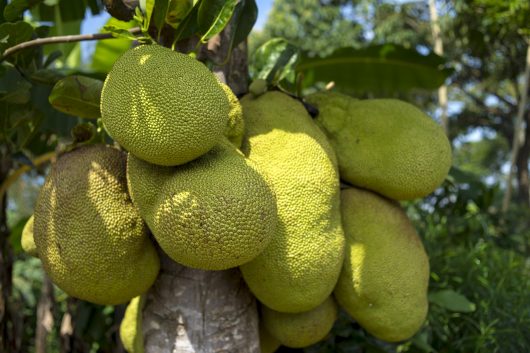Could Jackfruit Be Key to Ending World Hunger?
 It may seem crazy, but a fruit with the consistency of pulled pork, a putrid smell and a taste similar to pineapple could be one of the keys to ending world hunger. This crop, the jackfruit, can weigh up to 100 pounds and is rich in protein, potassium and vitamins.
It may seem crazy, but a fruit with the consistency of pulled pork, a putrid smell and a taste similar to pineapple could be one of the keys to ending world hunger. This crop, the jackfruit, can weigh up to 100 pounds and is rich in protein, potassium and vitamins.
Unfortunately, with its notorious smell, jackfruit has fallen out of favor with consumers in the nations where it most commonly grows in the wild: India and Bangladesh. In India alone, more than 75 percent of the yearly yield goes to waste.
How Is Jackfruit Ending World Hunger?
Recent cautions from the World Bank and the United Nations illustrate how inconsistent rain and soaring temperatures have already reduced wheat and corn yields, and food wars within the next decade are a possibility.
There is an upside. The crops affected most by climate change also have substantial requirements for irrigation and pesticides. The jackfruit, on the other hand, is a perennial (meaning it regrows every year on its own). While it takes up to seven years to bear fruit, which means farmers have to wait, a single tree can yield between 150 and 200 gargantuan fruits per year. It serves plenty of uses, as it can be found in soups, jams and even ice cream. People eat them fresh, dried or roasted. The wood is even rot resistant. With the fruit’s versatility and the ease with which it is cultivated, it is no surprise experts are excited about the jackfruit’s ability to aid in ending world hunger.
Who Loves Jackfruit?
There is an organization aptly called Project Jackfruit that is looking to make jackfruit as readily available as possible over the world. The project believes jackfruit’s status as a “miracle crop” is just another reason it is essential to ending world hunger. It also states that the procurement of the crop will help fight climate change, eliminate waste, feed hungry populations and provide another revenue stream for impoverished farmers in South Asia. The organization markets the fruit globally and has set up relationships with Indian farmers to scale up their production.
The Indian government has gotten on the bandwagon by launching initiatives to increase the fruit’s use in a can and as a processed food. India is fighting to destroy jackfruit’s stigma as a “poor man’s food” via marketing strategies throughout the country. It is outsourcing these projects to local universities such as the University of Agricultural Sciences in Bangalore, India, which devoted two days to a conference that detailed plans to ramp up production and further market the jackfruit and its cousin, the breadfruit.
Looking Forward
Only a handful of commercial jackfruit farms are commercially viable at this point. Still, the future looks bright for the jackfruit. Governments are pushing the resilient crop in their own countries, as well as in food-insecure countries. At the University of Agricultural Sciences, a researcher referred to the fruit as a “miracle.” Combine all this effort with the rise of private investments such as Project Jackfruit, it will be no surprise if jackfruit is a primary part of the discussion behind ending world hunger.
– David Jaques
